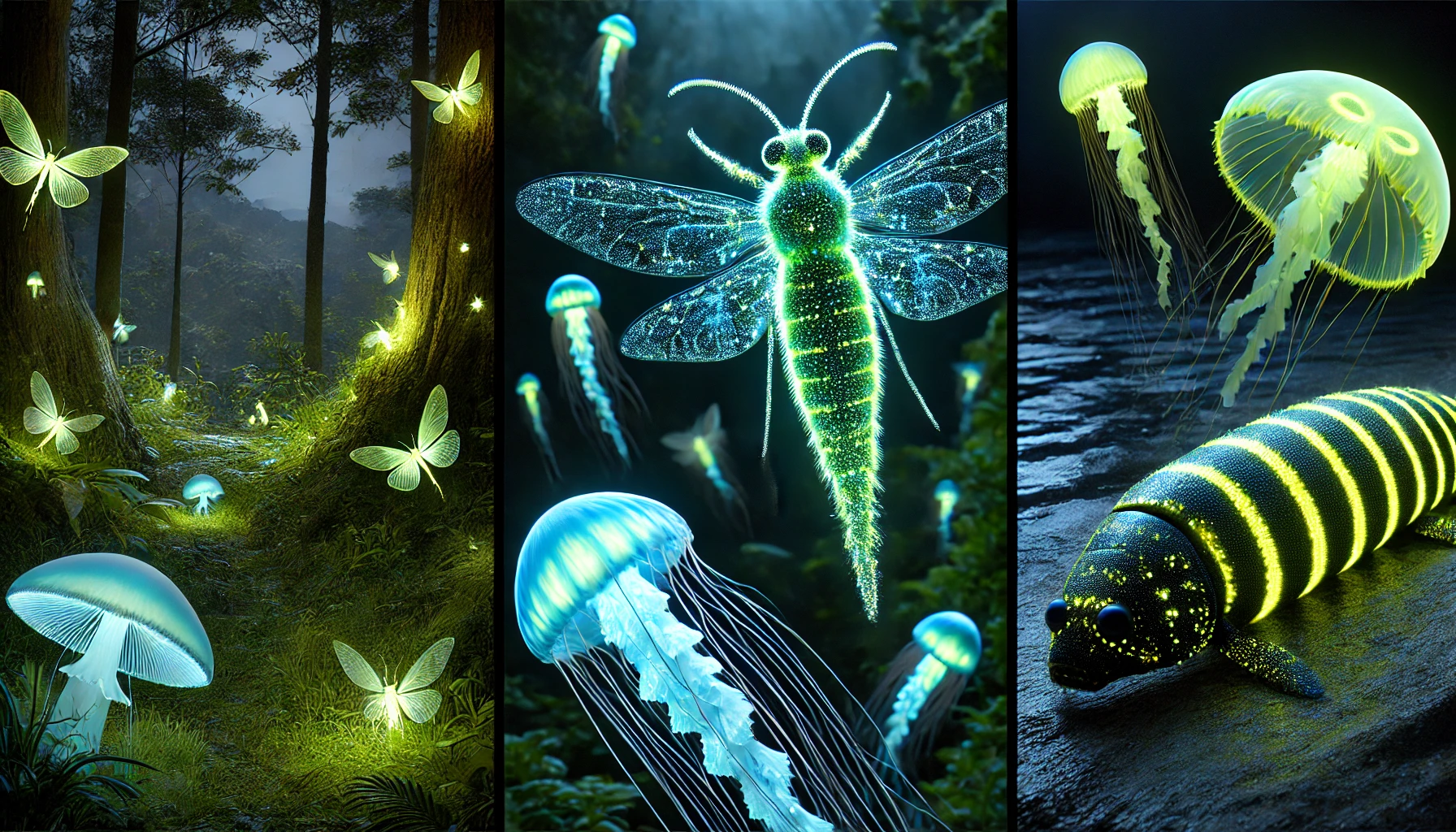Nature has its own way of lighting up the dark, with numerous species of animals capable of glowing in pitch-black environments. This fascinating phenomenon, known as bioluminescence, is not just a beautiful spectacle but also serves various biological functions. From the depths of the ocean to the canopies of rainforests, these living nightlights play a crucial role in the survival strategies of these glow-in-the-dark creatures. Glow-in-the-dark animals captivate our imagination and showcase nature’s creativity.
What is Bioluminescence?
Bioluminescence is the production and emission of light by a living organism. It occurs through a chemical reaction within the organism where energy is converted to light. The most common bioluminescent reactions involve the molecule luciferin and the enzyme luciferase. Different glow-in-the-dark species have adapted this characteristic in various ways, influencing their behavior, predation, mating, and defense mechanisms. Bioluminescence is a key part of what makes glow-in-the-dark animals so fascinating.
Fireflies: The Classic Nightlights
Fireflies are among the most iconic bioluminescent animals. These beetles use their glow as a means of communication during mating seasons and as a defense mechanism to deter predators. Each species of these glow-in-the-dark animals has a distinct pattern of light, allowing individuals to find suitable mates. Fireflies are a prime example of glow-in-the-dark animals adapting light for survival.
Deep-Sea Dwellers: The Abyssal Luminaries
In the abyssal zone of the ocean, where sunlight fails to penetrate, many marine organisms rely on bioluminescence. Creatures like the anglerfish use a light-producing lure to attract prey, while others, like certain species of jellyfish, emit light to confuse predators or attract mates. Glow-in-the-dark animals in the ocean depths have adapted to their unique environment magnificently. These abyssal luminaries showcase the diverse adaptations of glow-in-the-dark animals.
The Glowing Fungi: Earth’s Natural Lamps
While not animals, bioluminescent fungi add to the eerie glow of the forest floors. These fungi use their glow to attract insects, which in turn helps disperse their spores, illustrating the diverse applications of bioluminescence in nature. Although not glow-in-the-dark animals, these fungi share a similar ability to light up their surroundings. These glowing fungi highlight the versatility of bioluminescence, even outside the animal kingdom.
The Role of Bioluminescence in Research
Bioluminescence has not only captivated naturalists but also researchers in various scientific fields. The genes responsible for light production in jellyfish have been used in genetic engineering to study the functions and interactions of living cells, offering profound insights into medical and biological research. Studying glow-in-the-dark animals has significantly advanced these fields. The study of glow-in-the-dark animals continues to provide crucial insights in scientific research.
Conservation of Bioluminescent Species
As enchanting as these creatures are, many bioluminescent species face threats from habitat destruction, pollution, and climate change. Conservation efforts are vital to ensure that these remarkable glow-in-the-dark animals continue to thrive and illuminate our world. Protecting these glowing creatures is essential for maintaining the balance of their ecosystems.
Conclusion
The glow-in-the-dark animals of our planet represent one of nature’s most magical features. Understanding and preserving these creatures not only helps protect biodiversity but also enhances our appreciation of the natural world’s wonders. Glow-in-the-dark animals remind us of the extraordinary and often hidden beauty in nature.

